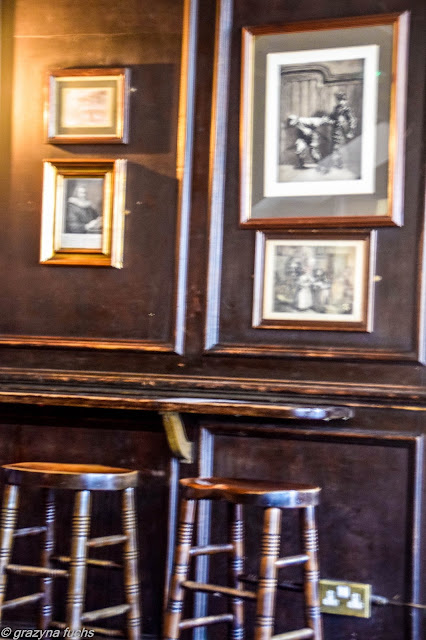I always come back to London with pleasure. I love walking along the Thames, meeting interesting places, old and new buildings in London. I'm sure everyone will find something interesting for themselves. The 7th century pub in the heart of London made a very nice impression and I enjoyed spending time drinking beer. I will definitely go to this place not once, London Bridge - nothing to add. You can not leave this place in London. The view of river is wonderful to admire life on the river. Cathedral. I wanted to go there several times during my time in London. She was always occupied by the state. Today I had the happiness. I could visit it inside. Great and worth seeing. I recommend going up the stairs to the galleries. The view from there is really impressive. Along the way the river meets modern and ancient culture which blends perfectly in the sight of London.

Feel as if I'm drinking with Shakespeare at one of his old haunts, The George, built in 1676.
Shakespeare lived and worked in Southwark, so it's likely that he'd have been one of its patrons; he may even have played there.

London's foodie haven Borough Market
can get incredibly busy with people following their noses to the
mountains of treats on offer. One half of the market focuses on fresh
produce to take home, whilst the other half is food ready to be devoured
on the spot; gourmet burgers, hot sandwiches, pies, baked goods,
coffees...
Winchester Palace was once one of the largest and most important
buildings in all of medieval London. Built in the early 13th century as a
home to the powerful Bishops of Winchester, the palace was mostly
destroyed by fire in 1814.
A few walls are all that remain of the palace of the powerful Bishops of
Winchester, one of the largest and most important buildings in medieval
London
Golden Hind was an English galleon best known for her privateering circumnavigation of the globe between 1577 and 1580, captained by Sir Francis Drake. She was originally known as Pelican, but was renamed by Drake mid-voyage in 1578, in honour of his patron, Sir Christopher Hatton, whose crest was a golden 'hind' (a female red deer).
Hatton was one of the principal sponsors of Drake's world voyage. There
is one full-size replica in existence in London, on the south bank of
the Thames.
Tower Bridge was built over 120 years ago to ease road traffic while
maintaining river access to the busy Pool of London docks. Built with
giant moveable roadways that lift up for passing ships, it is to this
day considered an engineering marvel and beyond being one of London’s
favourite icons, it is arguably one of the most famous and instantly
recognisable structures in the entire world.
The Tower of London's grim reputation as a
place of torture and death, within these walls you will also discover
the history of a royal palace, an armoury and a powerful fortress
Shakespeare's Globe is a unique international resource dedicated to the
exploration of Shakespeare's work and the playhouse for which he wrote,
through the connected means of performance and education
St Paul's Cathedral, London, is an Anglican cathedral, the seat of the Bishop of London and the mother church of the Diocese of London. It sits on Ludgate Hill at the highest point of the City of London and is a Grade 1 listed building. Its dedication to Paul the Apostle dates back to the original church on this site, founded in AD 604. The present cathedral, dating from the late 17th century, was designed in the English Baroque style by Sir Christopher Wren. Its construction, completed in Wren's lifetime, was part of a major rebuilding programme in the City after the Great Fire of London.
The cathedral is one of the most famous and most recognisable sights
of London. Its dome, framed by the spires of Wren's City churches, has
dominated the skyline for over 300 years.
At 365 feet (111 m) high, it was the tallest building in London from
1710 to 1967. The dome is among the highest in the world. St Paul's is
the second-largest church building in area in the United Kingdom after Liverpool Cathedral.
HMS Belfast is a museum ship, originally a light cruiser built for the Royal Navy, currently permanently moored on the River Thames in London, England, and operated by the Imperial War Museum.
Monument to the Great Fire of London
A permanent reminder of the Great Fire of 1666, the Monument
commemorates one of the most significant events in London’s history.
The station was first opened in 1848 by the London and South Western Railway, and replaced the earlier Nine Elms as it was closer to the West End. It was never designed to be a terminus, as the original intention was to continue the line towards the City of London, and consequently the station developed in a haphazard fashion leading to difficulty finding the correct platform. Waterloo is the busiest railway station
in the UK. It is also the country's largest station in terms of floor
space and has the greatest number of platforms at 24. When combined with
the Underground and Waterloo East stations, it is the busiest station
complex in Europe.
My Start and End of visiting London






























































No comments:
Post a Comment